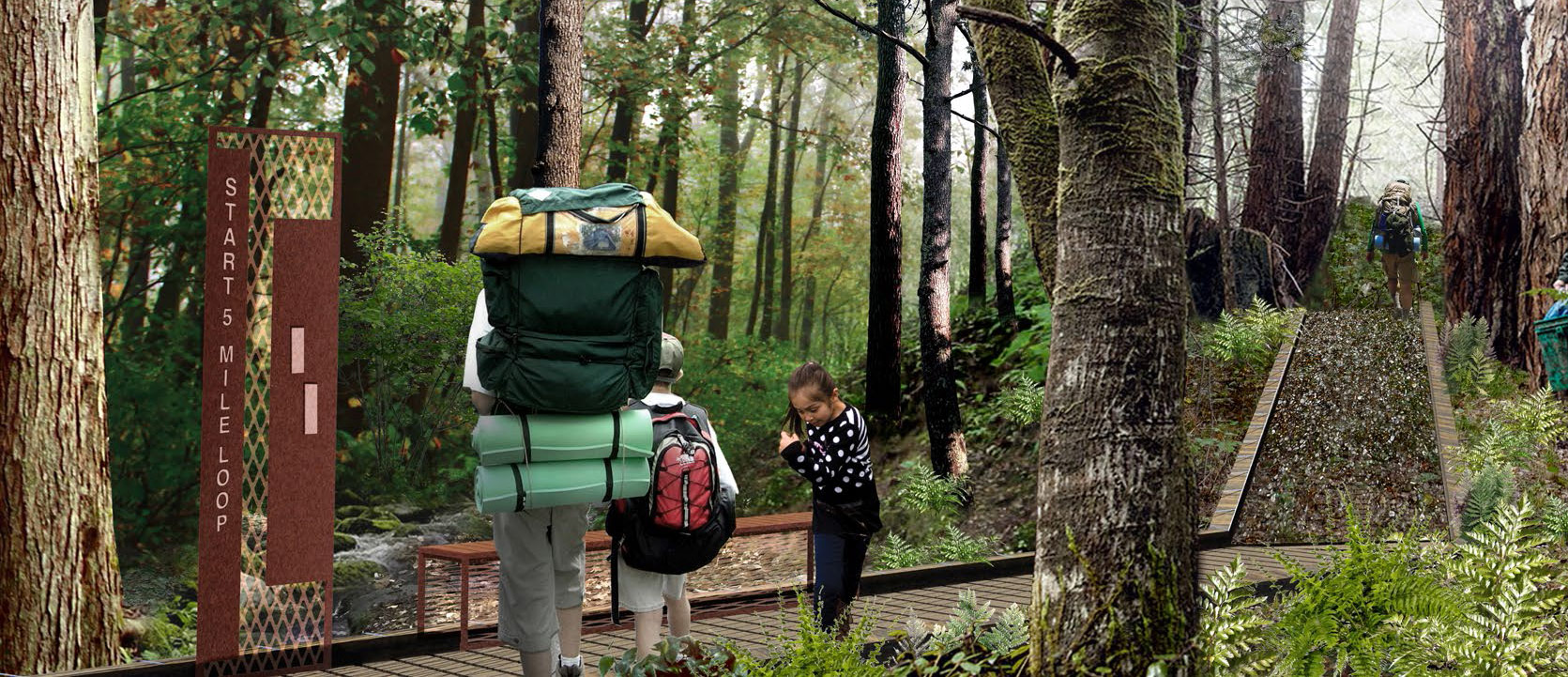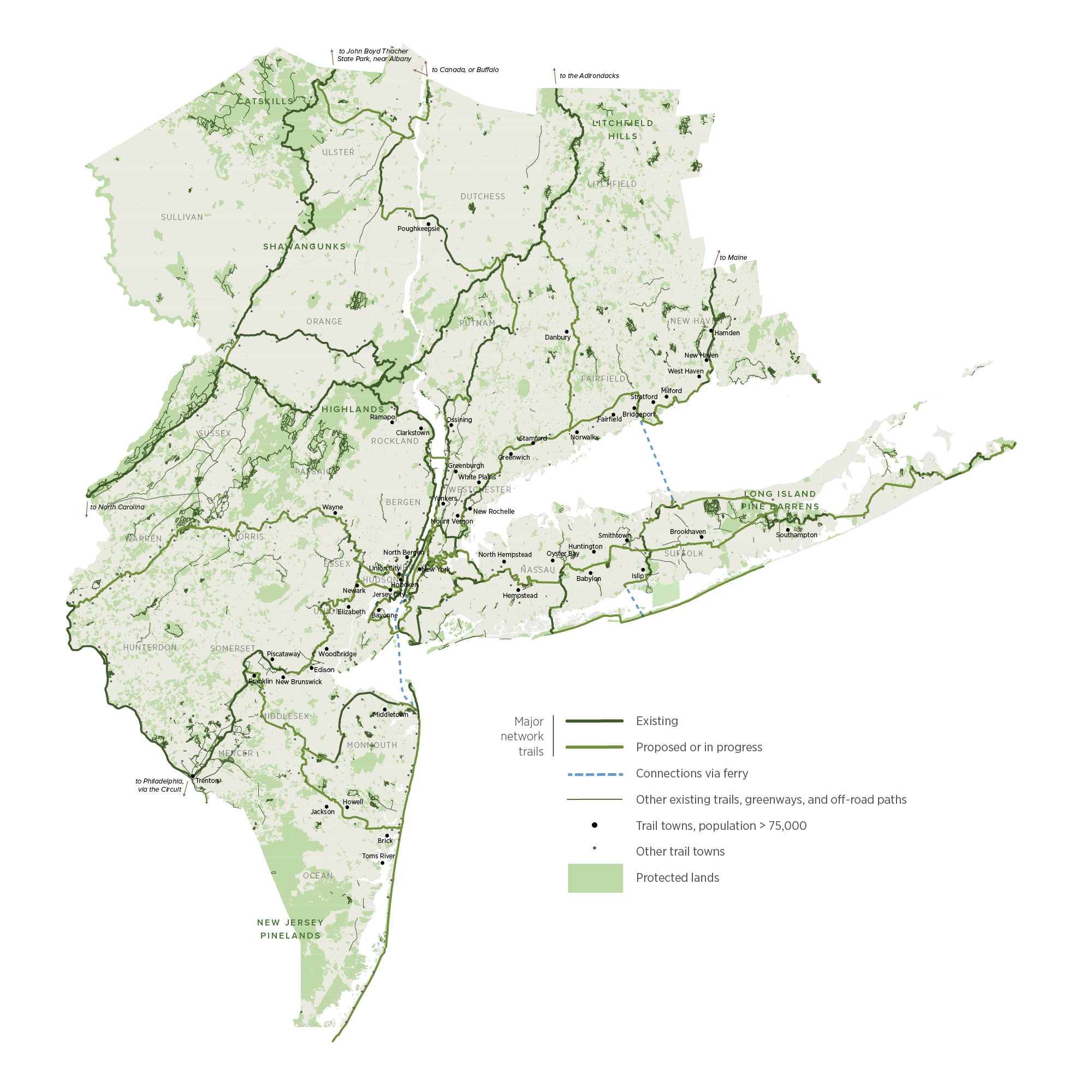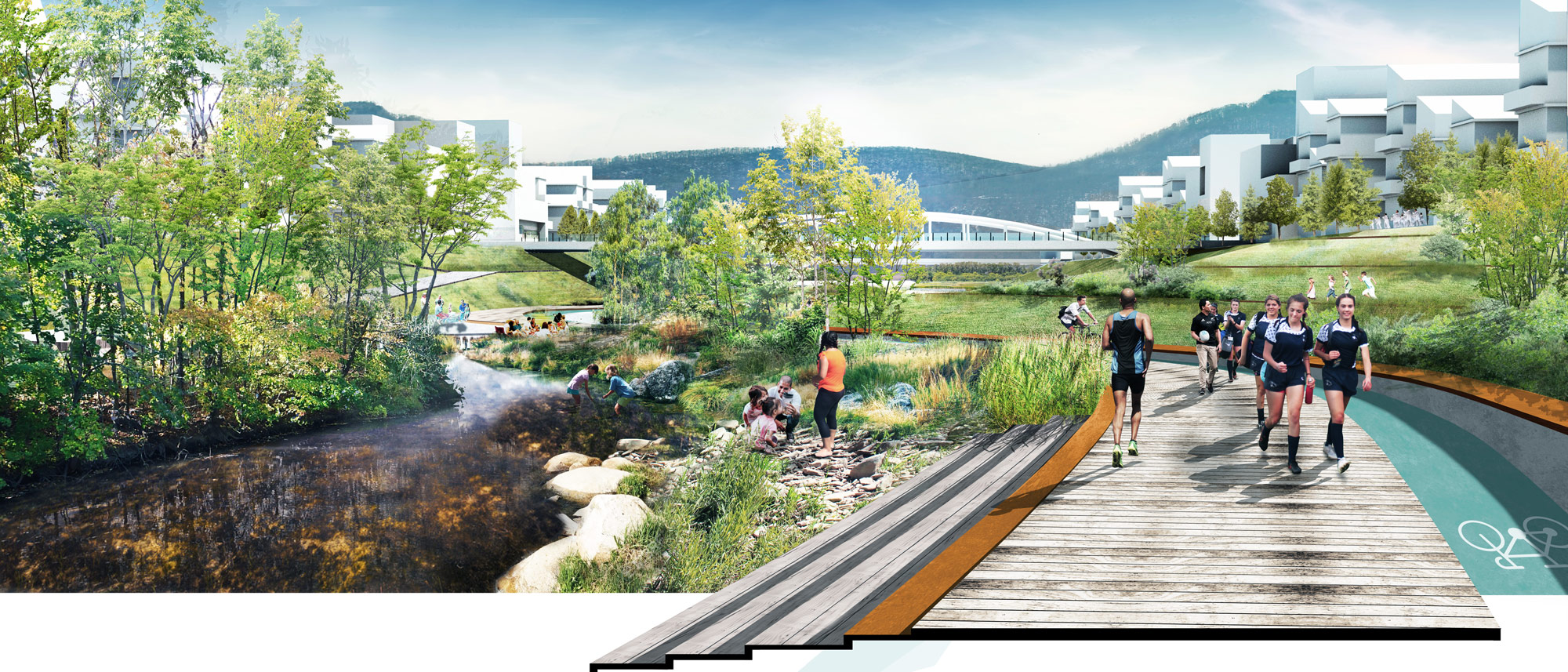
Our region is rich in natural and recreational resources, including large tracts of protected and unprotected open spaces, parks, agricultural lands, waterways, and estuaries. But we often overlook these natural wonders, thinking of them as individual places disconnected from each other, instead of as a part of a regional ecosystem. This lack of connection diminishes our ability to access the wide variety of natural beauty, openness, and geographies that exist in the region today. It reduces awareness and experience of the natural environment and opportunities for environmental stewardship and open-space protection.
An accessible trail network could connect the region’s open spaces
Outcomes


Paying for it
Building a regional trail network will require funding for planning, design, construction, and maintenance. One model is to combine philanthropic support with federal and state funding and partnerships at the local level, which was used in networks such as The Circuit around Philadelphia, PA, and could be replicated throughout the tri-state region. Increasingly, metropolitan planning organizations and state agencies recognize the importance of investing in multimodal transportation, including biking and walking. Ensuring line items in transportation budgets for trails will help advance those solutions.
Additionally, land trusts such as the Trust for Public Land and Scenic Hudson can play an important role in prioritizing open-space acquisition or securing easements for lands that contribute to the network. Finally, ensuring there are plans and adequate funding for maintenance and programming will be critical to the network’s success. An umbrella group that helps coordinate activities and supplement funding carried out by regional and local groups such as the New York-New Jersey Trail Conference and the D&R Greenway will help ensure the network thrives.
1. Friends of the Earth Europe, Nature for Health and Equity, 2017
2. Hudson River Valley Greenway